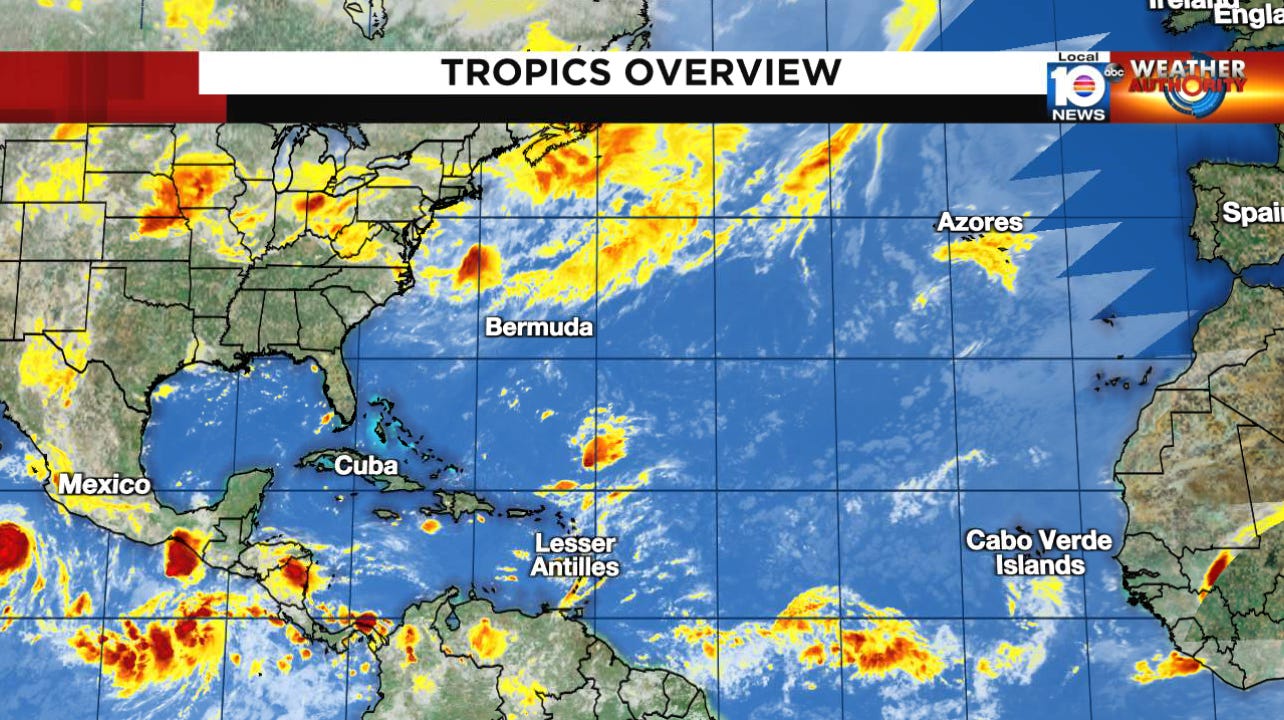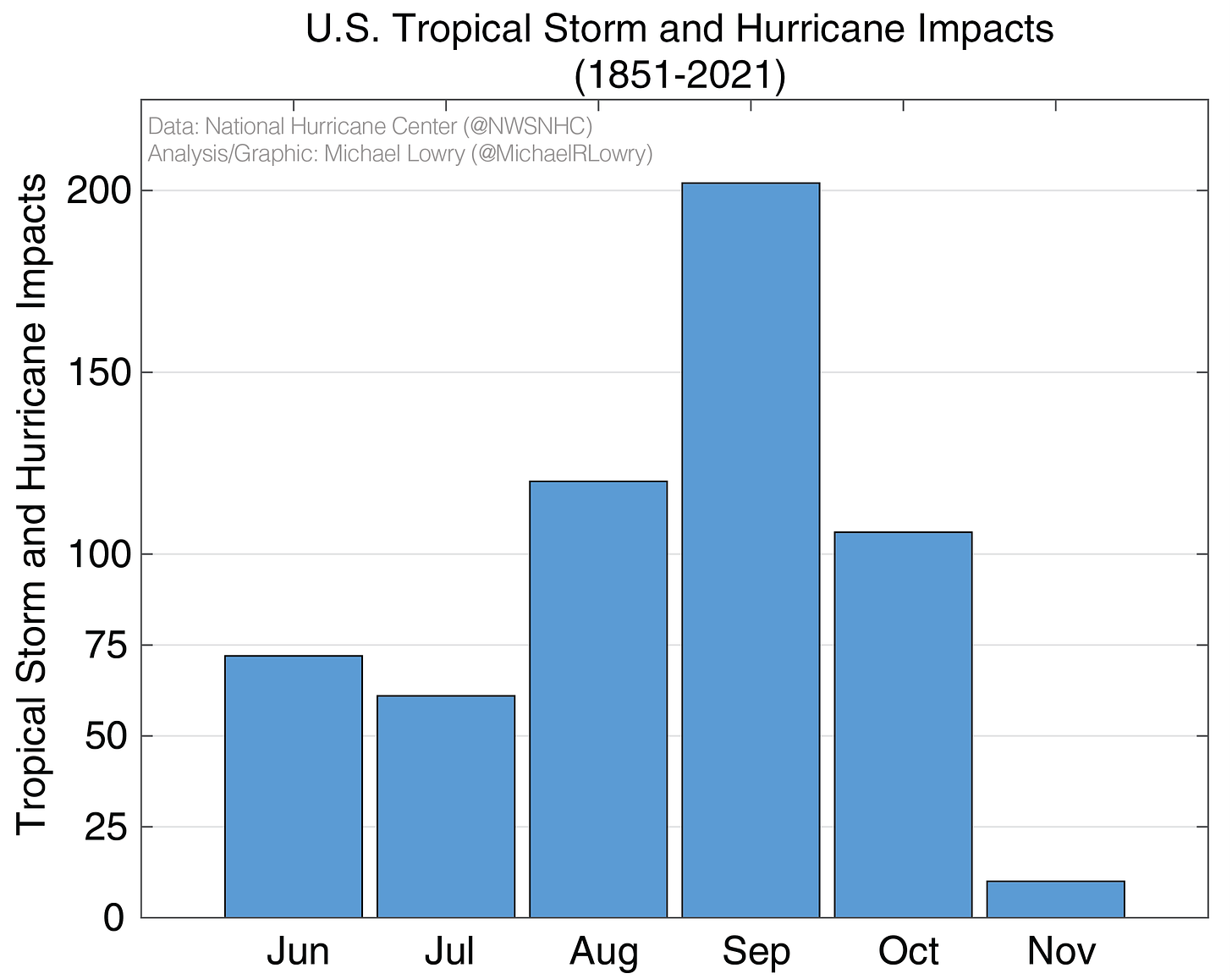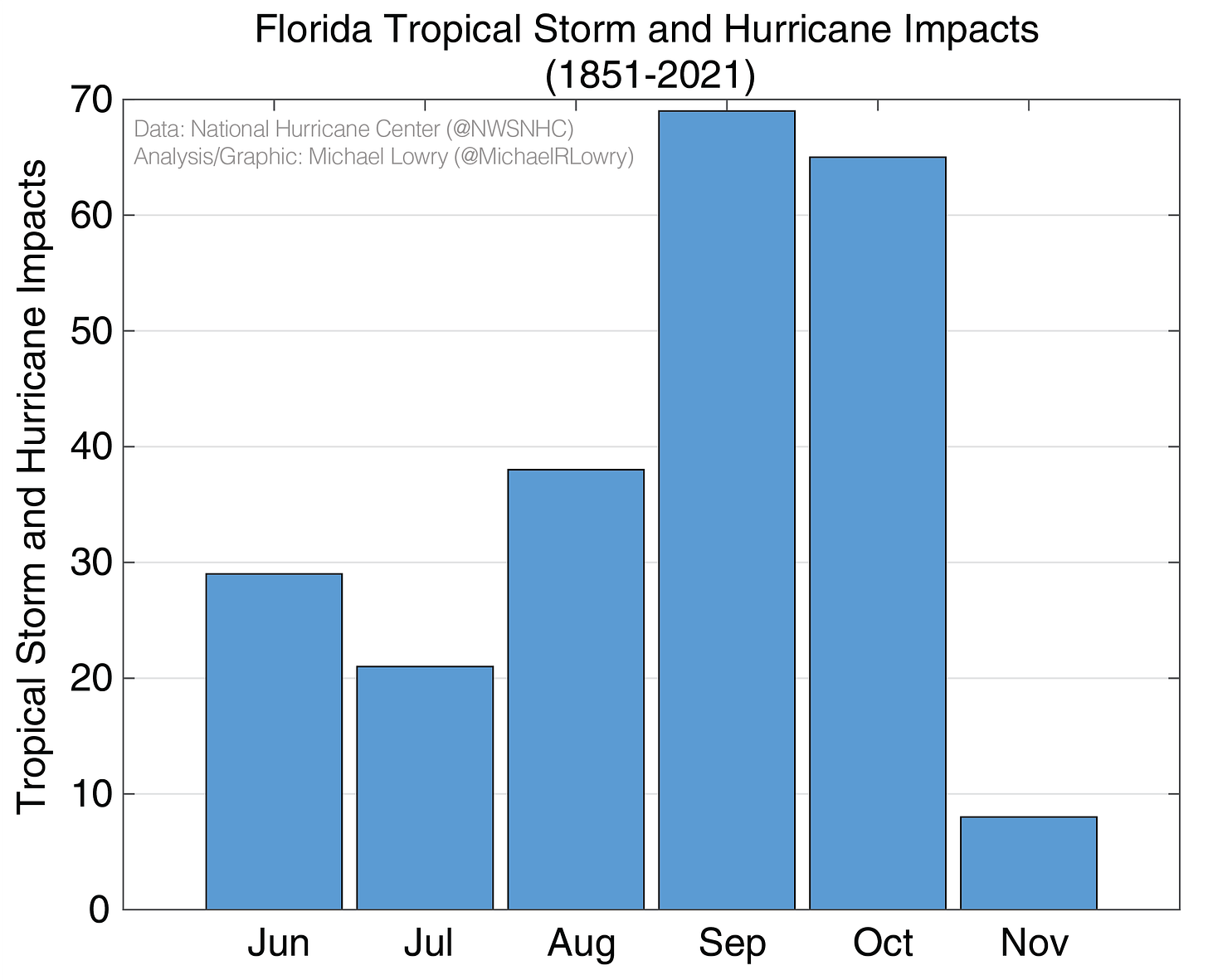Why July Could Be Your Best Month to Avoid a U.S. Summer Tropical Vacation Cancellation
Early July slumber continues across the tropical Atlantic
When people ask me the best time to take a vacation to avoid a cancellation because of a tropical storm or hurricane, I usually say July. The answer may seem a little curious at first. After all, you’re nearly twice as likely to see a hurricane on any given day in July in the Atlantic than you are in June. But the odds of a U.S. tropical storm or hurricane impact in July actually decrease slightly. The same holds true for Florida and other big hurricane states like Texas. So why is this?
July is a transition month across the tropics, when the occasional cold front – the last vestiges of spring – is less likely to make it far enough south to either create tropical mischief or drag already-formed tropical systems northward and toward the Sunshine State. It’s also a month when we typically see fewer “home brew” systems (storms that form close to the U.S.) and a gradual increase in storms that form from disturbances rolling through the deep tropical Atlantic. The combination results in a small notch down in overall U.S. impacts in July.
While the difference may not be significant between a U.S. tropical impact in June and one in July, all else equal, July isn’t a bad bet for a quick summer escape. Hurricane Season often begins with sloppy systems getting pulled northward toward the northern Gulf from the Caribbean followed by a break in July before the main event in August, September, and early October. Of course, every season is different, but using climatology can at least ease some concerns in planning ahead and avoiding tropical trouble.
Today, the tropical Atlantic has fallen into a summer slumber. No development is expected in the Atlantic through the week. Meanwhile, Bonnie, which began in the Atlantic before crossing into the eastern Pacific over the weekend, strengthened into a Category 3 hurricane yesterday with winds of 115 mph – the strongest hurricane observed in the western hemisphere so far in 2022. It’s begun a gradual weakening over the open Pacific, which is forecast to continue as it moves farther out to sea this week.





